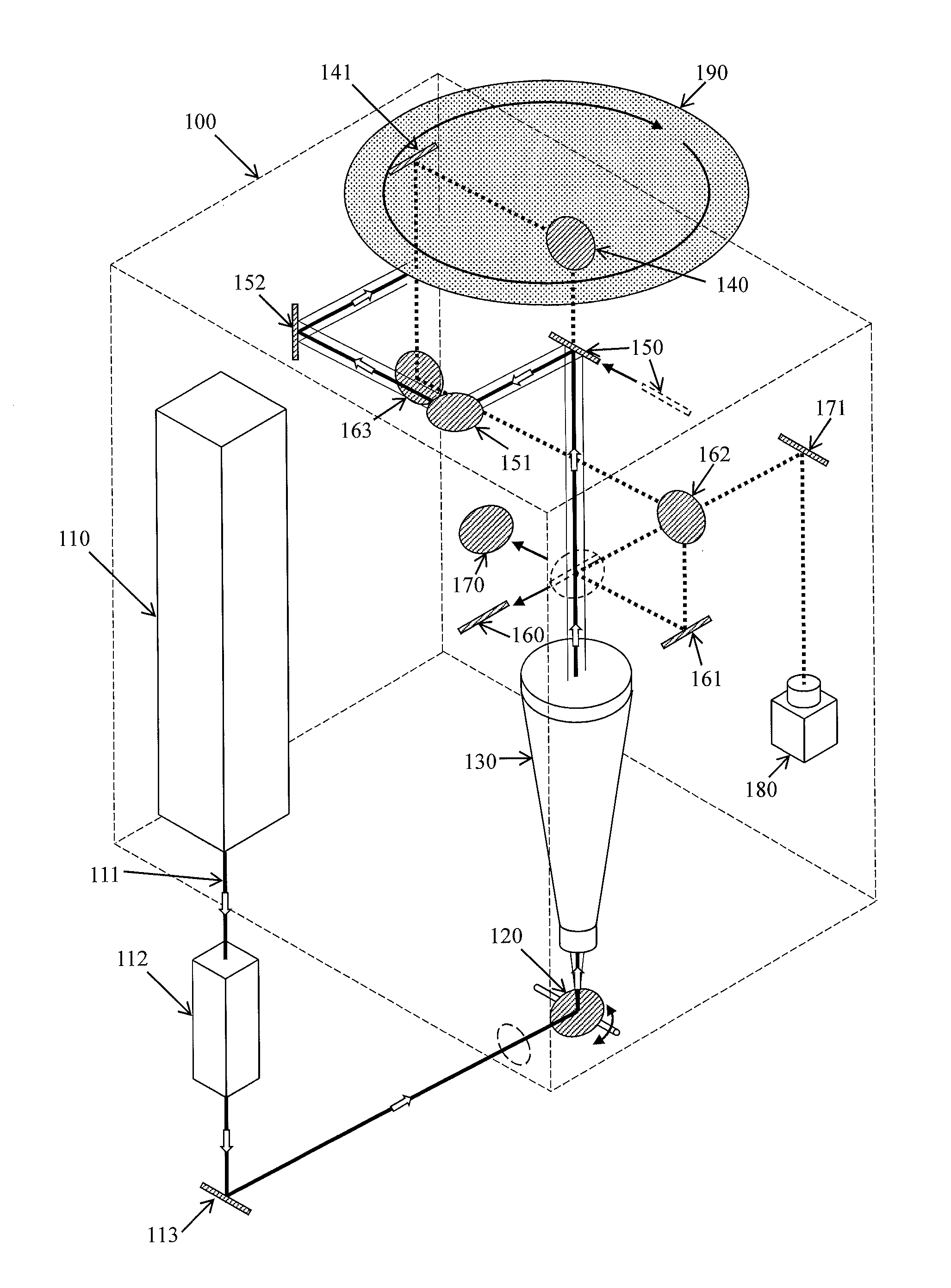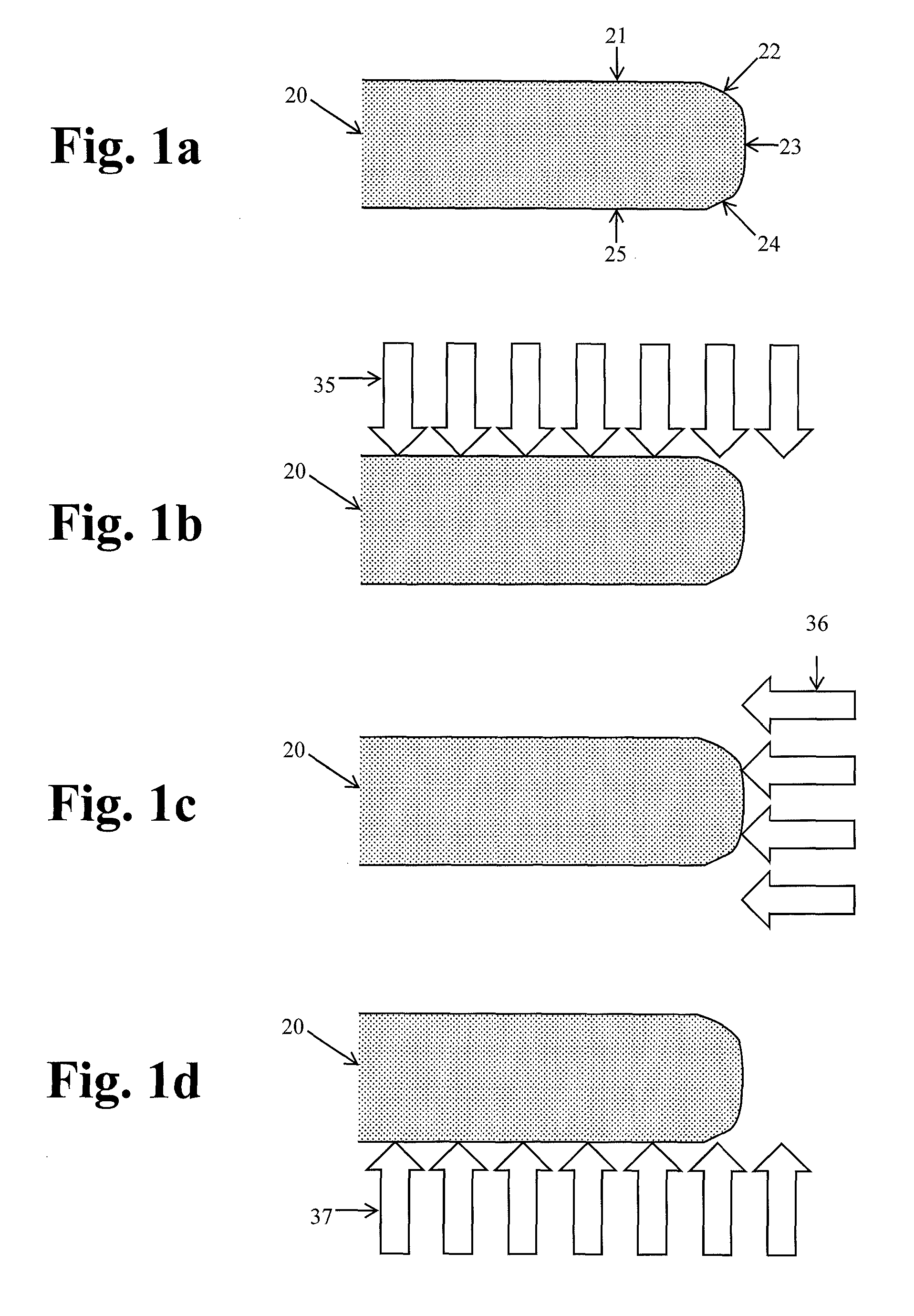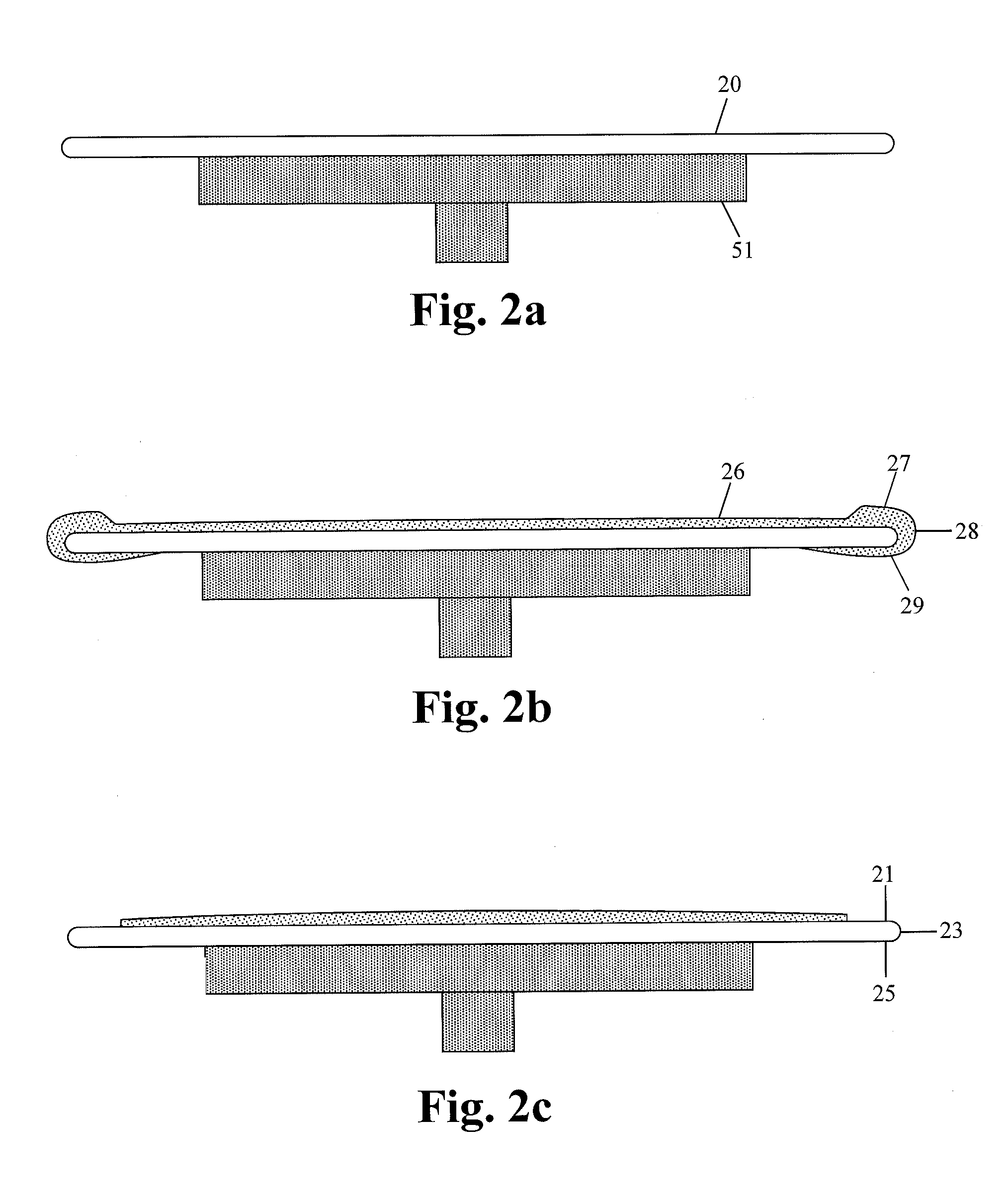Method and apparatus for processing substrate edges
a technology of substrate edges and processing methods, applied in photomechanical equipment, electric/magnetic/electromagnetic heating, instruments, etc., can solve the problems of inability of liquid solvents to control the geometry of cleaned edges, many undesirable particles, and high cost of edge bead removal processing in semiconductor manufacturing, so as to reduce the cost and complexity of cleaning process, accurate cleaning of wafer edges, and increase the number of usable dies
- Summary
- Abstract
- Description
- Claims
- Application Information
AI Technical Summary
Benefits of technology
Problems solved by technology
Method used
Image
Examples
Embodiment Construction
[0077]A description of example embodiments of the invention follows.
[0078]While the invention as recited in the claims presented elsewhere in this document may be susceptible to embodiment in different forms, there is shown in the drawings, and will be described herein in detail, one or more specific embodiments with the understanding that the present disclosure is to be considered but one exemplification of the principles of the invention, and there is no intent to limit the invention to that as illustrated and described herein. Therefore, any references to “the present invention” and “the disclosure” throughout this document are to be interpreted only as a reference to one particular, non-limiting example embodiment of but one aspect of the many inventions described and disclosed in this document.
[0079]The disclosure describes an apparatus and methods(s) for removing and / or transforming unwanted films, residues, and particles from the top, top bevel, apex, bottom bevel, and bottom...
PUM
| Property | Measurement | Unit |
|---|---|---|
| wavelength | aaaaa | aaaaa |
| wavelength | aaaaa | aaaaa |
| laser wavelength | aaaaa | aaaaa |
Abstract
Description
Claims
Application Information
 Login to View More
Login to View More - R&D
- Intellectual Property
- Life Sciences
- Materials
- Tech Scout
- Unparalleled Data Quality
- Higher Quality Content
- 60% Fewer Hallucinations
Browse by: Latest US Patents, China's latest patents, Technical Efficacy Thesaurus, Application Domain, Technology Topic, Popular Technical Reports.
© 2025 PatSnap. All rights reserved.Legal|Privacy policy|Modern Slavery Act Transparency Statement|Sitemap|About US| Contact US: help@patsnap.com



